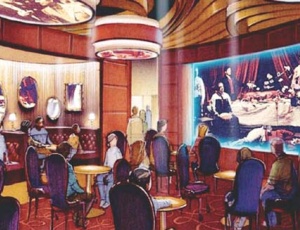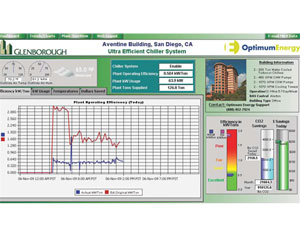Oregon and Washington are among the top three states when it comes to USGBC LEED certification, an indication of the region’s dedication to the environment. LEED certification has long been held as a symbol of a building’s commitment to sustainability, not to mention a means of satisfying local regulations requiring compliance, such as Seattle’s Sustainable Building Policy enacted in 2000.

But there are positive financial impacts as well. A recent USGBC study showed that building owners who focus on the energy efficiency aspects of LEED have on average a lower Energy Use Intensity (EUI). In other words, they’re providing the same level of service but doing it with less power, and as a result, reducing their environmental footprint and operating costs.
The Aventine complex, owned and operated by Glenborough, LLC, is a case in point. The facility’s property management team used ENERGY STAR, the EPA’s benchmarking tool program, to assess energy usage and identify areas for improvement. Realizing that substantial cost and energy-consumption savings could be realized by retrofitting their building with green technologies, the engineering team took on the task of lowering the facility’s operating costs.
Upgrading a Classic
Built 20 years previously, the Aventine is a landmark development in La Jolla, Calif., designed by Michael Graves & Associates. After high-efficiency light fixtures and lighting-control systems were installed, a feasibility study revealed that upgrades to the facility’s HVAC system would result in significant energy savings with minimal capital investment. As a result, the decision was made to convert the HVAC system to a primary only, all-variable-speed plant using the existing two McQuay centrifugal chillers, and install OptimumHVAC™ optimization software.
In just a few months, the chiller plant retrofit, and the installation of OptimumHVAC software were complete. The OptimumHVAC software suite from Optimum Energy provides ongoing commissioning for facilities equipped with centrifugal chiller plants and/or variable air volume air handling systems. OptimumHVAC automatically optimizes the entire HVAC system – including chillers, pumps, fans and air handling units – based on real-time load conditions using patented, relational controls algorithms. By early 2008, The Aventine’s chiller plant system performance improved and the facility’s energy use was decreased.
LEED Points with ENERGY STAR
ENERGY STAR is one of the measurements used to earn Energy & Atmosphere Credit 1 (EA Credit 1) points within LEED for Existing Buildings: Operations & Maintenance. The Aventine set its sights on earning the highest ENERGY STAR rating so that it would qualify for the maximum number of EA 1 points, and help in its bid to become LEED Platinum certified. As a result of the HVAC plant retrofit and use of OptimumHVAC software, Aventine’s 2008 ENERGY STAR rating was 100, a 15 point increase from its rating of 85 in 2007.
Results that Last
In the first year after upgrading its HVAC chiller plant, The Aventine reduced its energy consumption by 45%. That was right in line with expectations, as the use of OptimumHVAC software typically results in 30% to 60% reductions in commercial building HVAC energy use without sacrificing occupant comfort. In the first year, The Aventine saved 500,000 kWh of electricity, reduced operating costs by more than $80,000, decreased carbon emissions by 600,000 lbs, and improved the HVAC plant’s wire-to-water kW/ton by 45%. The Aventine also received a utility rebate of $105,000, putting the facility in a good position to realize its projected three-year return on investment.
Another important goal of The Aventine is to ensure the savings are maintained over time, and with OptimumHVAC’s Performance Assurance services, they track energy use and HVAC performance 24/7 via a secure Web site. In addition, OptimumHVAC Performance Assurance provides measurement and validation, and tracks energy and carbon emissions savings, helping to satisfy requirements for corrective action response, performance measurement and emissions reduction reporting required by certification programs such as LEED.
“Achieving an ENERGY STAR rating of 100 is unprecedented for a 20-plus year old building,” says Carlos Santamaria, Director of Engineering for Glenborough. “Installation of OptimumHVAC is saving us money and better positioning the Aventine in its pursuit of LEED Platinum certification.”


Post a comment to this article
Report Abusive Comment